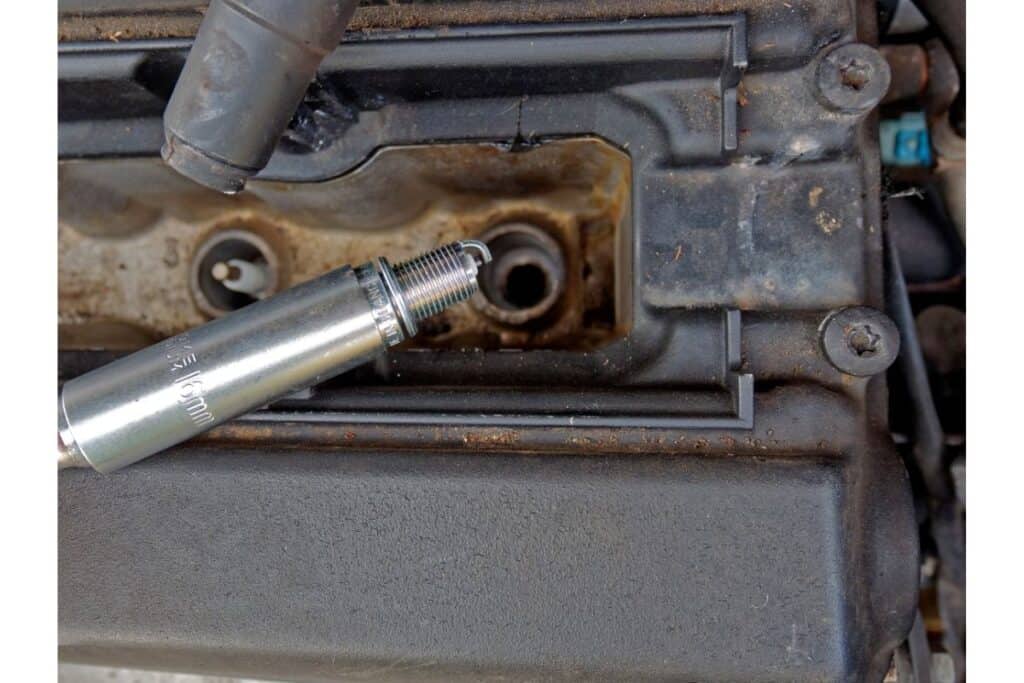

Engine hesitation, that frustrating hiccup or stumble in your vehicle’s performance, might just be a sign of worn-out spark plugs. A smooth and responsive engine is essential for a comfortable and enjoyable driving experience. This article dives into the connection between engine hesitation and the importance of spark plugs. We’ll explore the underlying causes, provide practical diagnostic tips, and walk you through a spark plug replacement process. Finally, we’ll offer advice to avoid further problems and address any lingering questions.
Understanding Engine Hesitation
Common Causes
Engine hesitation, often described as a momentary stumble or hiccup in a vehicle’s acceleration, can be a symptom of several underlying issues. It’s not always a simple fix. One potential culprit is a problem with the ignition system itself, including a malfunctioning ignition coil, which delivers high voltage to the spark plugs. Poor fuel delivery, whether due to a clogged fuel filter or other issues with the fuel system, can also manifest as hesitation. Worn spark plugs, unable to consistently ignite the air-fuel mixture, often lead to this frustrating problem. A significant amount of research indicates that replacing worn spark plugs is one of the most effective ways to address the issue of engine hesitation.
The Role of Spark Plugs
Spark Plug Functionality
Spark plugs are crucial components of the ignition system in internal combustion engines. Their purpose is to create a spark that ignites the air-fuel mixture within the combustion chamber, initiating the combustion process. Defective spark plugs often result in inconsistent or insufficient spark, interrupting the engine’s normal operation and leading to hesitation. Numerous reviews from satisfied customers have highlighted the effectiveness of spark plug replacement in resolving hesitation issues. The specific type and condition of your spark plugs can impact engine performance significantly.
How Worn Spark Plugs Contribute to Engine Hesitation
When spark plugs wear out, their ability to generate a robust spark is compromised. This leads to an uneven combustion process, causing the engine to hesitate as it struggles to maintain consistent ignition. The quality and condition of the spark are directly correlated with the overall performance and efficiency of the engine. Over time, deposits on the electrodes of the spark plug can prevent it from creating a strong enough spark. These deposits are often a byproduct of improper combustion processes, making regular replacement important to ensure optimal engine performance and prevent further issues.
Diagnosing Engine Hesitation
Recognizing the Symptoms
Early detection and correct diagnosis are key in avoiding potential damage to the engine or costly repairs down the road. Engine hesitation is usually accompanied by a noticeable stumble or hiccup in the engine’s performance. This can be particularly noticeable during acceleration or when the engine transitions between different speeds. Observing these symptoms is crucial for determining the necessity for further investigation.
Methods for Troubleshooting Spark Plug Issues
Beyond visual inspection, several diagnostic methods can help pinpoint spark plug-related hesitation. Using a multimeter to check for proper spark plug voltage is a helpful tool. If the readings are significantly below the manufacturer’s recommendations, it could point to spark plug issues. In addition to mechanical issues, you might want to consider more general maintenance and usage tips to ensure the proper functioning of the engine.
Replacing Spark Plugs
Step-by-Step Guide
Replacing spark plugs often requires some mechanical expertise and should be handled with caution. Before starting the replacement process, locate your vehicle’s owner’s manual for specific steps and necessary tools. The procedure typically involves removing the old spark plugs, inspecting them for damage or excessive wear, installing new spark plugs, and ensuring a secure fit. Following the appropriate procedure is key to a successful replacement.
Choosing the Right Spark Plugs
Selecting the correct spark plugs is essential for optimal performance. Consult your vehicle’s owner’s manual for the recommended spark plug type and specifications. Using the wrong spark plugs can lead to poor ignition, engine misfire, and other issues. It’s essential to ensure you get the correct heat range and gap, both critical for optimal ignition.
Maintaining Your Engine Health
Prevention is Key
Regular maintenance is crucial for preventing engine hesitation and other problems. Regular checks of spark plugs, fuel filter, and other critical components can help you address any potential issues before they escalate into more costly repairs. By scheduling routine maintenance visits, you’re investing in the long-term health and performance of your vehicle.
Avoiding Issues
Proper engine maintenance, including routine spark plug replacements and fuel system checks, can significantly reduce the risk of encountering engine hesitation problems. Many manufacturers recommend replacing spark plugs every 30,000 to 60,000 miles, depending on driving conditions and vehicle make/model. Prioritize these measures as crucial for maintaining the engine’s overall health. Following these preventative steps can significantly extend the lifespan and reliability of your vehicle.
Frequently Asked Questions
What are the common causes of engine hesitation?
Engine hesitation can stem from several sources, including faulty spark plugs, a malfunctioning ignition system, a clogged fuel filter, a problem with the oxygen sensor, or a potential issue with the vehicle’s electronic control module (ECM). Addressing these issues is crucial for restoring optimal engine performance. Sometimes, simple maintenance like a spark plug replacement is all that’s needed, while more complex problems may require professional inspection and repair.
How can I determine if my engine hesitation is caused by spark plugs?
Inspecting the condition of your spark plugs can help pinpoint if they’re the culprit behind engine hesitation. Look for signs of excessive wear, fouling, or damage. If you suspect spark plugs are at fault, replacing them immediately is the most effective and often cost-effective approach to fixing the hesitation issue. Remember to use the correct spark plug type and gap setting specified in your vehicle’s owner’s manual.
What are the steps to replace spark plugs and what tools are needed?
Replacing spark plugs generally involves removing the old plugs, installing new ones, and tightening them correctly. You’ll need a socket set, a wrench, and a spark plug socket to remove the existing spark plugs. When installing the new spark plugs, follow the instructions provided in your owner’s manual to ensure the correct torque settings for your vehicle’s make and model. Proper torque is critical for optimal performance and avoiding potential problems.
What are the potential risks of ignoring engine hesitation?
Ignoring engine hesitation can lead to various problems, ranging from decreased fuel efficiency to significant engine damage. Prolonged hesitation can stress critical engine components, potentially causing damage to the engine’s internal parts. Ultimately, neglecting the problem could lead to costly repairs or even engine failure. So, addressing hesitation promptly is key to maintaining your vehicle’s longevity and reliability.
In conclusion, engine hesitation can be a frustrating issue, but often it’s a symptom of a readily solvable problem. By systematically checking spark plugs, fuel delivery, and ignition systems, you can pinpoint the cause and take action to restore your vehicle’s smooth operation. Remember, preventative maintenance, such as regular spark plug replacements, can significantly reduce the likelihood of encountering engine hesitation issues down the road. If you’re still experiencing problems after these checks, consult a qualified mechanic for professional diagnosis and repair. Don’t hesitate to contact us for a free consultation and assessment of your vehicle’s condition.